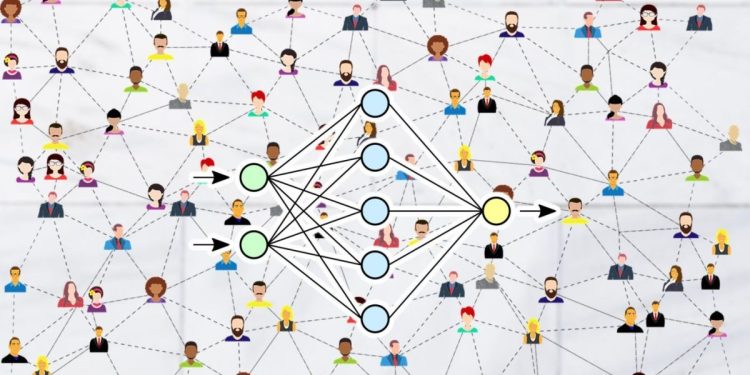Graph Neural Networks: Graphs are everywhere around us. Your social network is a graph of people and relations. So is your family. The roads you take to go from point A to point B constitute a graph. The links that connect this webpage to others form a graph. When your employer pays you, your payment goes through a graph of financial institutions.
Copyright by venturebeat.com
 Basically, anything that is composed of linked entities can be represented as a graph. Graphs are excellent tools to visualize relations between people, objects, and concepts. Beyond visualizing information, however, graphs can also be good sources of data to train machine learning models for complicated tasks.
Basically, anything that is composed of linked entities can be represented as a graph. Graphs are excellent tools to visualize relations between people, objects, and concepts. Beyond visualizing information, however, graphs can also be good sources of data to train machine learning models for complicated tasks.
Graph neural networks (GNN) are a type of machine learning algorithm that can extract important information from graphs and make useful predictions. With graphs becoming more pervasive and richer with information, and artificial neural networks becoming more popular and capable, GNNs have become a powerful tool for many important applications.
Transforming graphs for neural network processing
Every graph is composed of nodes and edges. For example, in a social network, nodes can represent users and their characteristics (e.g., name, gender, age, city), while edges can represent the relations between the users. A more complex social graph can include other types of nodes, such as cities, sports teams, news outlets, as well as edges that describe the relations between the users and those nodes.
Unfortunately, the graph structure is not well suited for machine learning. Neural networks expect to receive their data in a uniform format. Multi-layer perceptrons expect a fixed number of input features. Convolutional neural networks expect a grid that represents the different dimensions of the data they process (e.g., width, height, and color channels of images).
Graphs can come in different structures and sizes, which does not conform to the rectangular arrays that neural networks expect. Graphs also have other characteristics that make them different from the type of information that classic neural networks are designed for. For instance, graphs are “permutation invariant,” which means changing the order and position of nodes doesn’t make a difference as long as their relations remain the same. In contrast, changing the order of pixels results in a different image and will cause the neural network that processes them to behave differently. […]
Read more: venturebeat.com
Thank you for reading this post, don't forget to subscribe to our AI NAVIGATOR!


Graph Neural Networks: Graphs are everywhere around us. Your social network is a graph of people and relations. So is your family. The roads you take to go from point A to point B constitute a graph. The links that connect this webpage to others form a graph. When your employer pays you, your payment goes through a graph of financial institutions.
Copyright by venturebeat.com
Graph neural networks (GNN) are a type of machine learning algorithm that can extract important information from graphs and make useful predictions. With graphs becoming more pervasive and richer with information, and artificial neural networks becoming more popular and capable, GNNs have become a powerful tool for many important applications.
Transforming graphs for neural network processing
Every graph is composed of nodes and edges. For example, in a social network, nodes can represent users and their characteristics (e.g., name, gender, age, city), while edges can represent the relations between the users. A more complex social graph can include other types of nodes, such as cities, sports teams, news outlets, as well as edges that describe the relations between the users and those nodes.
Unfortunately, the graph structure is not well suited for machine learning. Neural networks expect to receive their data in a uniform format. Multi-layer perceptrons expect a fixed number of input features. Convolutional neural networks expect a grid that represents the different dimensions of the data they process (e.g., width, height, and color channels of images).
Graphs can come in different structures and sizes, which does not conform to the rectangular arrays that neural networks expect. Graphs also have other characteristics that make them different from the type of information that classic neural networks are designed for. For instance, graphs are “permutation invariant,” which means changing the order and position of nodes doesn’t make a difference as long as their relations remain the same. In contrast, changing the order of pixels results in a different image and will cause the neural network that processes them to behave differently. […]
Read more: venturebeat.com
Thank you for reading this post, don't forget to subscribe to our AI NAVIGATOR!
Share this: